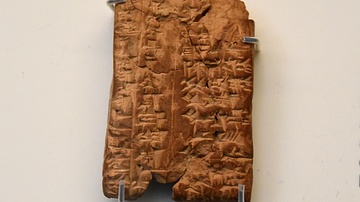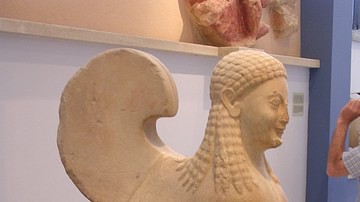Illustration
Since very ancient inscriptions would often come to light during building and restoration work, Mesopotamian scribes possessed some understanding of the pictographic origin of their script. The text on this clay tablet is an attempt to provide contemporary characters with their original counterparts. From the library of Ashurbanipal at Nineveh (modern-day Ninawa Governorate, Iraq), northern Mesopotamia. Neo-Assyrian period, 7th century BCE. (The British Museum, London).
About the Author
Cite This Work
APA Style
Amin, O. S. M. (2014, October 13). Cuneiform Archaic Signs. World History Encyclopedia. Retrieved from https://www.worldhistory.org/image/3133/cuneiform-archaic-signs/
Chicago Style
Amin, Osama Shukir Muhammed. "Cuneiform Archaic Signs." World History Encyclopedia. Last modified October 13, 2014. https://www.worldhistory.org/image/3133/cuneiform-archaic-signs/.
MLA Style
Amin, Osama Shukir Muhammed. "Cuneiform Archaic Signs." World History Encyclopedia. World History Encyclopedia, 13 Oct 2014, https://www.worldhistory.org/image/3133/cuneiform-archaic-signs/. Web. 25 Apr 2025.








